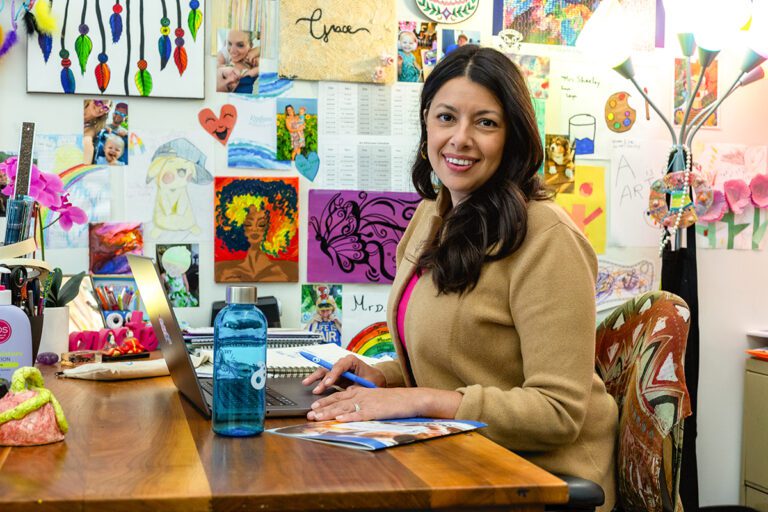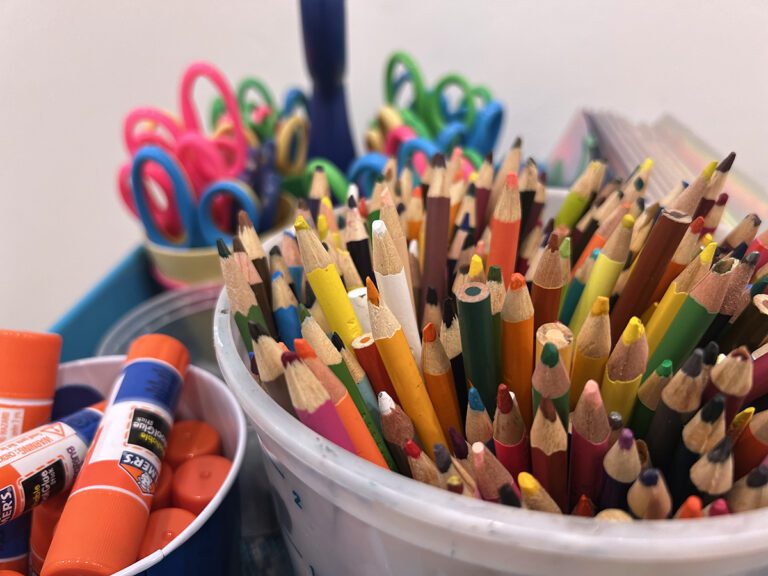Although there are still a few months left of school, you may already be making plans for next year. As art educators, we know the value of reflection and we may have already identified some lessons to toss, and some lessons to improve on in the future. We are pretty good at taking into consideration what worked and what didn’t from our perspective, but it’s important to remember who our audience is as well.
If you think back to your own college courses, you may recall completing an exit survey for your professor at the end of the semester. This is more-and-more common for university professors and departments to receive student feedback. Questions range from “What was your reason for taking this course?” to “How well did the syllabus inform course expectations?”
Now, these types of questions may not apply to your K-12 art classroom, but you can easily use this concept to receive some meaningful feedback from your students.
When to Ask
Art educators should develop a culture in their classroom where feedback is always welcome, but you may decide on a specific time(s) to ask for feedback formally.
Many art educators welcome students at the beginning of the year with a questionnaire that is equal parts Getting to Know You and What Do You Hope to Learn? questions. This is a great way to tap into what students’ expectations and interests are about your class. You certainly already have a withstanding curriculum and projects planned for the year, but by analyzing student responses, you can make changes here and there to help your students better connect with the content.
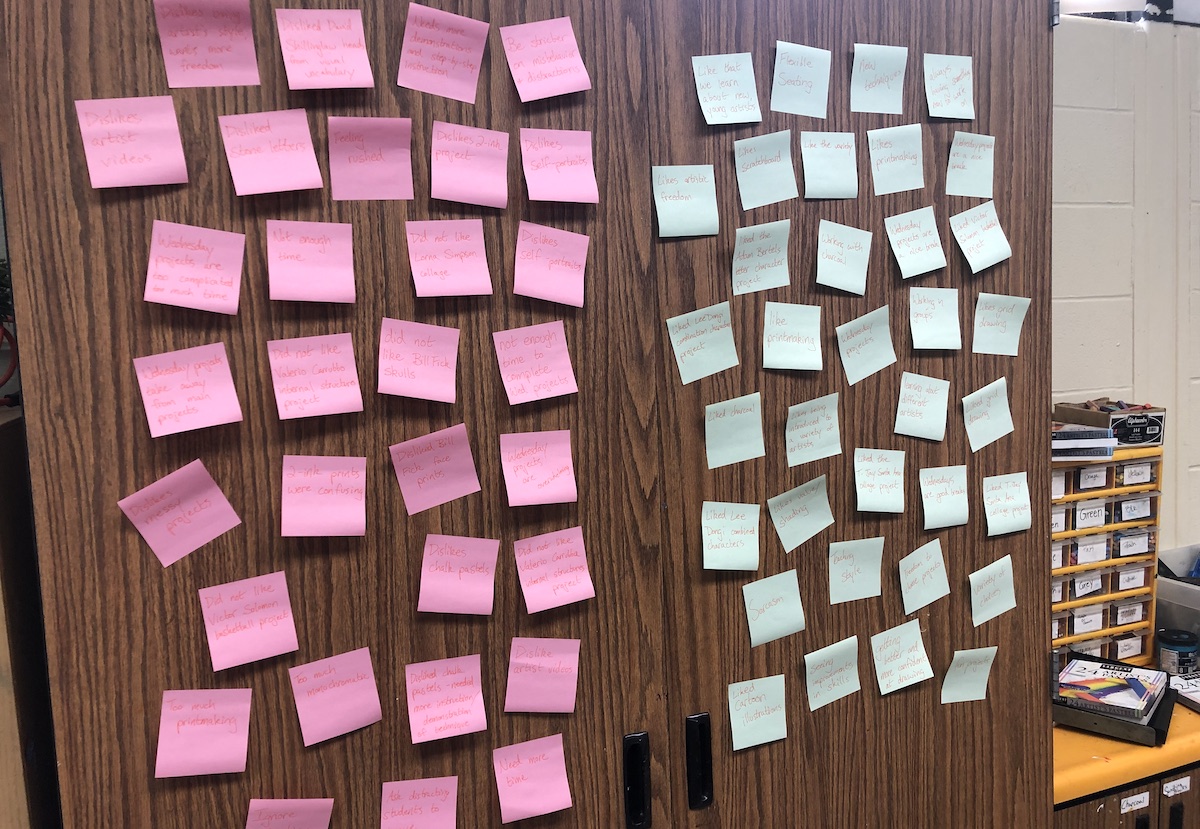
Mid-year is another great time to check in with students and ask for feedback. Their expectations and interests most likely changed since they first walked into your classroom. They’ve had roughly eighteen weeks to experience your teaching style, art projects, and classroom dynamic.
Now is the time to ask, “What’s going well?” and “What about this class is challenging or frustrating?”
The benefit of asking students for feedback mid-year is you still have time to turn the year around. If you find from analyzing the feedback that the majority of your students don’t find video tutorials effective, you can make changes in the spring. You may begin incorporating written directions or teacher-led demonstrations to better present the instruction. Likewise, if you find that students love doing group work you can seek opportunities for more collaboration in the weeks ahead.
How and What to Ask
For meaningful feedback, you’re going to want to read or hear responses in individual student voices, not predetermined and multiple choice responses. Ask questions like, “What was your favorite lesson so far, and why?” You not only want insight into what they liked about class, but also the way that helped them connect with the content.
When you ask a question like, “What did you dislike or find most challenging about this class?,” you’re opening yourself up for a harsh response like, “Everything. I don’t like art.” That’s heartbreaking and not at all helpful! However, if you include a follow-up question like, “What do you suggest I do to improve this?” you can gain a better understanding of that student’s needs. You may still receive a few short and dismissive responses, but hopefully most of your students give you useful feedback.
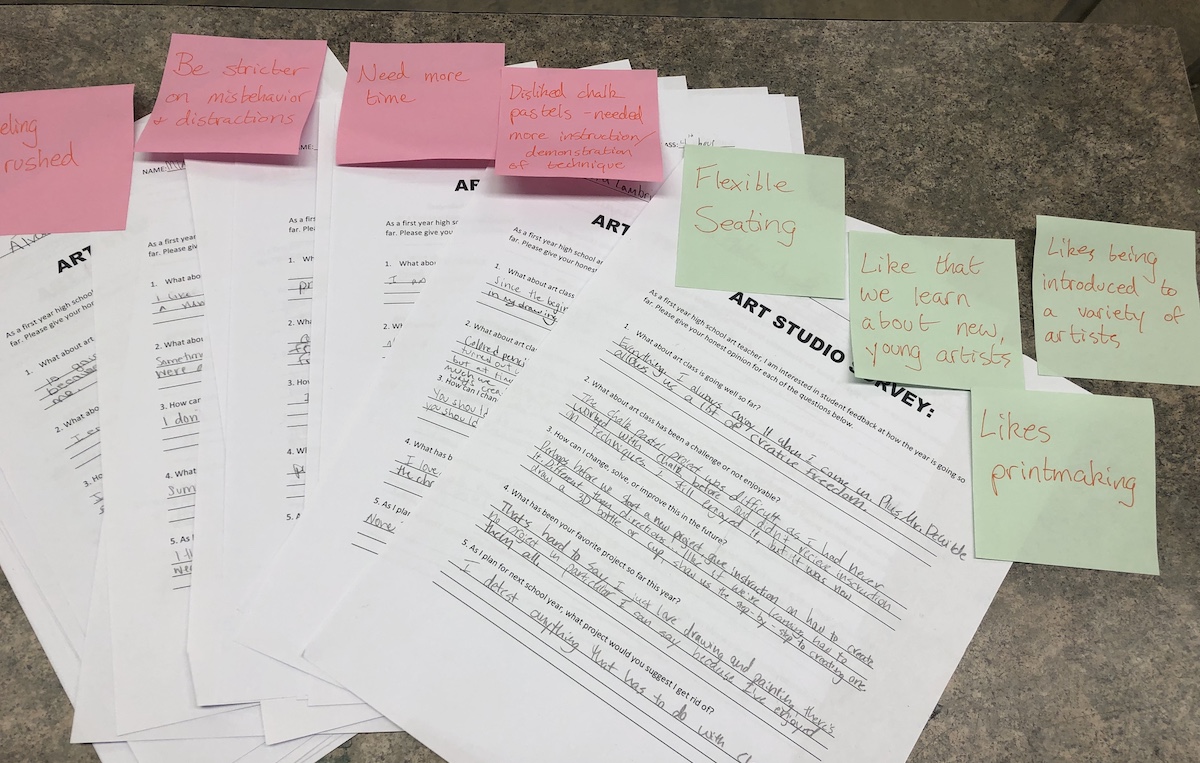
For example, a student may say “There are too many projects. I can’t keep up.” The follow-up question that asks for suggestions may lead to a response like, “Give us more time to work and fewer drawing prompts.” You may be able to address this by making adaptations for students who need more time, and designating a few drawing prompt exercises activities for your early-finisher students exclusively.
Create a survey or questionnaire that asks students to respond in their own words. Emphasize that you truly want honest feedback and that the goal is to improve the class for all students.
Don’t Take it Personally
Whenever we open ourselves up to feedback, it will include the good, the bad, and the ugly. Remember the reason why you are asking for feedback in the first place, to improve instruction and best meet the needs of your students.
You may receive dozens of responses praising your teaching and affirming the decisions you’ve made for curriculum and instruction. However, those one or two critical responses may feel like a dagger straight to the heart. Be prepared for those few comments that may sting a little. It’s certainly natural to be sensitive when receiving feedback about your work. You put a lot of time and effort into developing your craft.
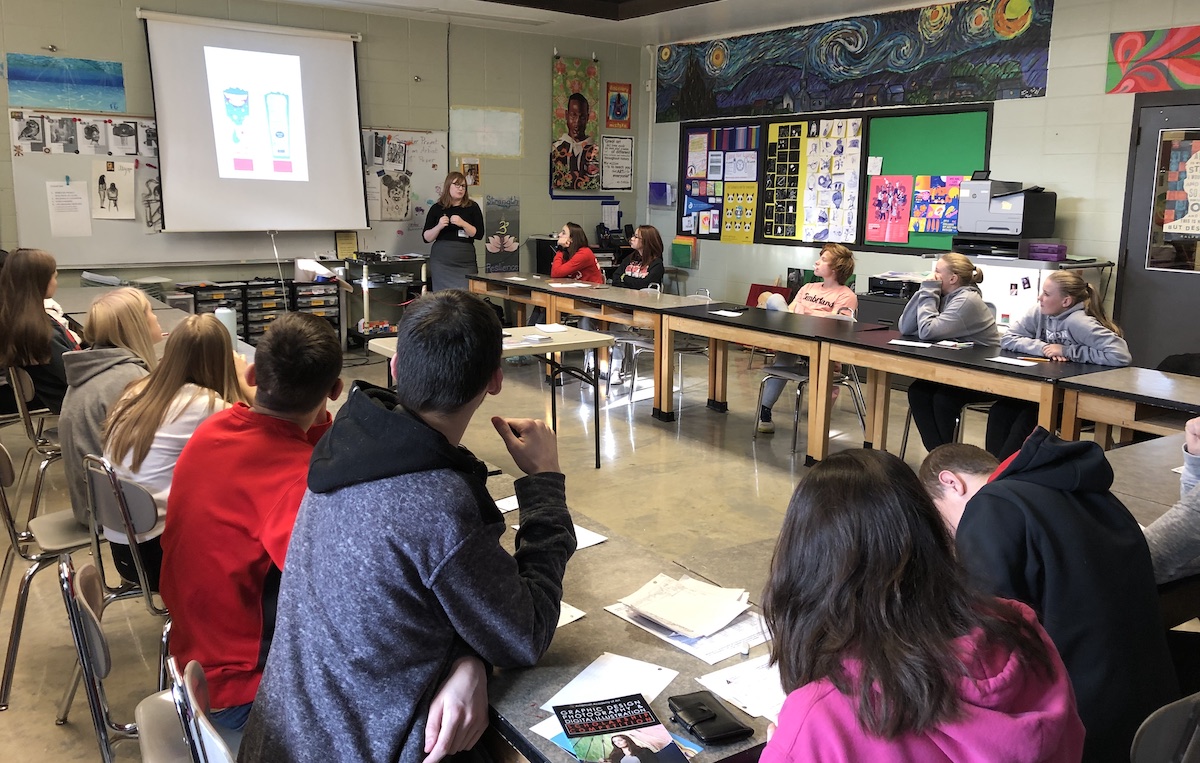
When those critiques come in, pause and try to read it as constructive criticism. If the student has a problem with how you deliver material or the limitations of your lessons, think of ways that you might improve the class for this individual. Of course, you can’t please everyone 100% of the time, but there may be something small you can do that will make a world of difference for that student.
Learn more
5 Ways to Make Giving Student Feedback Simple
4 Ways to Get Honest Feedback from Your Elementary Students
How to Generate Student Feedback to Improve Your Classes
Many students crave more freedom in the projects they create. In a future project, respond to this request by giving a few skill-based parameters and open up the choice of subject matter and/or media to students. Explain to them that you are directly responding to their feedback and want to give them more artistic freedom. They will know you took the questionnaire or survey seriously, heard their feedback and that you’re applying it to your teaching. That’s huge for them! Many students feel their opinions aren’t heard at all in school. You can show them that you care and want to make your class meaningful.
Final Thoughts
Asking for feedback can be kind of scary for art educators. Just like artists, we are sensitive about our work! However, we also have a deep desire to evolve and improve ourselves. We want to grow and be the best teachers we can be so our students can also succeed in our classrooms.
Administrative and peer feedback is great and beneficial to growth, but we have to also consider the students’ perspective. They directly benefit from our curriculum and instruction. They also have some pretty great ideas that can help you perfect an already awesome class! Take time to ask for their input. You’ll be surprised at the difference it can make!
How do you ask students for feedback?
What’s the best student suggestion you’ve received?
How do you keep a thick skin when receiving criticism?
Magazine articles and podcasts are opinions of professional education contributors and do not necessarily represent the position of the Art of Education University (AOEU) or its academic offerings. Contributors use terms in the way they are most often talked about in the scope of their educational experiences.




